Role of ICT for Multi-Disciplinary Applications in 2030
Original price was: ₹7,400.00.₹5,920.00Current price is: ₹5,920.00.
ISBN: 9788793379480
Author/Editor: Leo P Ligthart
Publisher: River Publishers
Year: 2016
2 in stock (can be backordered)
Description
The theme of this book is “Role of ICT for multi-disciplinary applications in 2030”, which is absolutely appropriate to explore with regard to the CONASENSE vision of looking at services utilizing the Communications, Navigation, Sensing and Services (CONASENSE) paradigm in a period of 20-50 years from now. The vision of CONASENSE society is to bring about active integration of the three worlds of communications, navigation and local/remote sensing – that have been apart for years require a multidisciplinary approach. This 4th Communication, Navigation, Sensing and Services (CONASENSE) book brings together in contributions from another society, namely, Global ICT Standardization Forum for India (GISFI).Technical topics discussed in the book include: * Wireless Sensor Networks* Advanced IoT and M2M* Future Space Communications Infrastructure* ICT Networks for CONASENSE in 2030* International ICT Research* Secure Vehicular Ad-Hoc Networks* Heterodox Networks* CONASENSE Innovation Era* CONASENSE at NanoscaleThus the book provides a rich and interesting coverage of diverse aspects concerning multi-disciplinary applications.
Additional information
| Weight | 0.489 kg |
|---|
Product Properties
| Year of Publication | 2016 |
|---|---|
| Table of Contents | Chapter 1. Main Requirements 1 1.1. Introduction 1 1.2. Sinusoidal variables 1 1.2.1. Single-phase variables 1 1.2.2. 2-phase voltages and currents 4 1.2.3. Balanced 3-phase sinusoidal systems 5 1.2.4. Unbalanced 3-phase sinusoidal systems: Fortescue symmetrical components 8 1.3. Electromagnetism 12 1.3.1. Primary laws 12 1.3.2. Materials and magnetic circuits 14 1.3.3. Inductances 24 1.3.4. Skin effect or Kelvin effect 29 1.3.5. Torque calculation using the virtual work principle 30 1.4. Power electronics 36 1.4.1. Rectifiers and naturally commutated inverters 37 1.4.2. AC thyristor controllers 41 1.4.3. Choppers 44 1.4.4. Cycloconverters 47 1.4.5. Force commutated inverters 47 Chapter 2. Introduction to Rotating Electrical Machines 49 2.1. Introduction 49 2.2. Main notations 50 2.2.1. Vectors 51 2.3. Principle of the electromechanical energy conversion 51 2.4. Continuous energy conversion 55 2.5. Non-salient and salient poles 55 2.6. Notion of pole pitch 58 2.7. Stator/rotor coupling: the ?asic machine?59 2.8. Losses within the machines 69 2.8.1. Losses due to Joule effect (or ?oule losses? 69 2.8.2. Electromagnetic losses (or ?ron losses? 70 2.8.3. Mechanical losses 70 2.9. Nominal values 70 2.10. General sign covenant 71 2.11. Establishment of matricial equations 71 2.11.1. Working assumptions 72 2.11.2. Expression of the instantaneous torque 72 2.11.3. Continuous energy conversion in cylindrical machines 74 2.11.4. Continuous energy conversion in salient pole machines 77 2.12. Mechanical equation 79 2.13. Conclusion 80 Chapter 3. Synchronous Machines 81 3.1. Introduction 81 3.2. Introduction and equations of the cylindrical synchronous machine 82 3.2.1. General description 82 3.2.2. Why synchronous? 85 3.2.3. Rotation speeds at constant frequency 88 3.2.4. Equations of the cylindrical machine 88 3.3. Analysis of the synchronous machine connected to an infinite power network 93 3.3.1. Phasor diagram 93 3.3.2. Active (P) and reactive (Q) graduation of the voltage diagram 94 3.3.3. ?nternal?powers 96 3.3.4. Stability of the synchronous machine 100 3.3.5. V-curves called ?ordey curves?106 3.3.6. Case when resistance R is negligible 110 3.4. Considerations about the salient pole synchronous machine 111 3.4.1. Torque and inductance matrix 112 3.4.2. Calculation of the flux 113 3.4.3. Electrical equation and phasor diagram 118 3.4.4. Calculation of the torque and stability analysis 120 3.5. Consideration about permanent magnet machines 122 3.5.1. Surface permanent magnets machines 123 3.5.2. Machines with inserted magnets 124 3.5.3. Machines with embedded magnets 125 3.5.4. Modeling of permanent magnet machines 128 3.5.5. Cylindrical machine modeling 130 3.6. Inverted AC generators 137 3.7. Implementation of synchronous machines 138 3.7.1. Implementation of synchronous motors 138 3.7.2. Implementation of the AC generators taking into account the saturation phenomena 150 3.8. Experimental determination of the parameters164 3.8.1. Cylindrical machine in linear state 164 3.8.2. Saturation of the cylindrical machine 164 3.8.3. Salient poles machine 165 Chapter 4. Induction Machines 167 4.1. Introduction 167 4.2. General considerations 168 4.2.1. Structures 168 4.2.2. Working principle 172 4.3. Equations 173 4.3.1. Main notations 173 4.3.2. Sign covenants and working assumptions 174 4.3.3. Conventional representation 175 4.3.4. Flux analysis 175 4.3.5. Electrical equations 179 4.3.6. Change in the sign covenant 180 4.4. Equivalent circuits 181 4.5. Induction machine torque 183 4.5.1. Instantaneous torque 183 4.5.2. Analysis of the energy transfer 185 4.5.3. Expression of the electromagnetic torque in terms of the slip 187 4.6. Study of the stability 189 4.7. Circle diagram (or ?londel?diagram) 192 4.7.1. Introduction 192 4.7.2. g and in 1/g graduation of the circle 193 4.7.3. Simplified circle diagram 195 4.8. Induction machine characteristics 200 4.9. Implementation of induction machines 205 4.9.1. Motor mode 205 4.9.2. Generator mode 217 4.9.3. Single-phase induction motor 225 4.10. Principle of the experimental determination of the parameters 234 4.10.1. Case of wound rotor induction machines 234 4.10.2. Case of cage induction machines 235 Chapter 5. Direct Current Machines 237 5.1. Introduction 237 5.2. Main notations 238 5.3. DC machine structure 238 5.3.1. Constituents 238 5.3.2. Analysis of the field winding 242 5.3.3. Analysis of the armature winding 244 5.4. DC machine equations 252 5.4.1. Hypotheses and covenants 252 5.4.2. Equations 252 5.4.3 Determination of the parameters 256 5.5. Separately excited motor 258 5.5.1. Introduction 258 5.5.2. External characteristics 260 5.5.3. Energy recovery: generator operating 265 5.6. Series excited motor 269 5.6.1. Introduction 269 5.6.2. External characteristics 271 5.7. Special case of the series motor: the universal motor 274 5.8. Commutation phenomena 274 5.9. Saturation and armature reaction 278 5.10. Implementation of DC motors 279 5.10.1. Constant voltage implementation 280 5.10.2. Present implementation of DC motors 284 |
| Author | Leo P Ligthart |
| ISBN/ISSN | 9788793379480 |
| Binding | Hardback |
| Edition | 1 |
| Publisher | River Publishers |
You must be logged in to post a review.

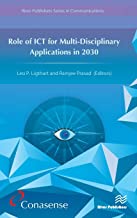
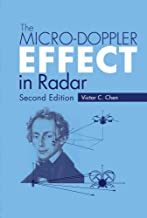
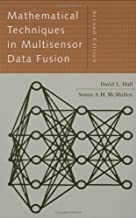
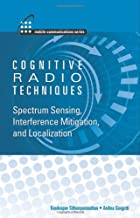
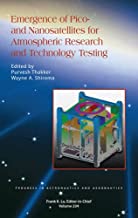
Reviews
There are no reviews yet.